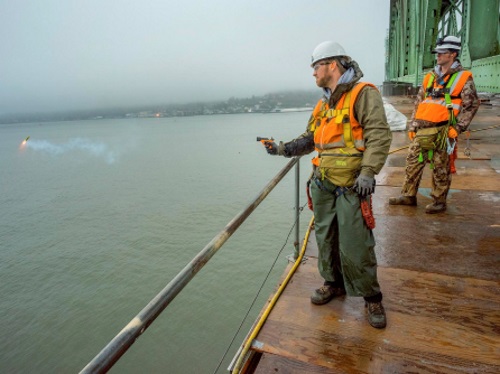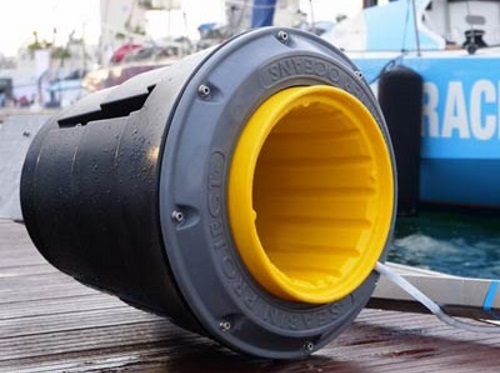FEDERAL ACTION
Obituary: Alaska Rep. Don Young, 88, Was Long-Time Infrastructure Leader – ENR
Biden wants to spend infrastructure billions on climate and equity initiatives. But it’s not his call. – Politico
Funding America’s Inland Waterway System During the Green Transition – Maritime Executive
US Deputy Secretary of Transportation Polly Trottenberg – National Roadway Safety Strategy, Bipartisan Infrastructure Law, and More – ITE Talks Transportation (Podcast)
COVID-19
COVID-19 Recovery: Riders are Coming Back but Where are the Drivers? – Mass Transit
Arlington County, Virginia To Promote Transit Use In Post-COVID Marketing Push – ARLnow
Washington Ferries struggling with mask compliance – KGMI Radio
NEPA
Many BLM grazing permits renewed without NEPA review, group says – E&E News
INFRASTRUCTURE RESILIENCE AND SUSTAINABILITY
AASHTO Helps Launch EV States Clearinghouse – AASHTO Journal
New Guidebook Helps New Jersey Municipalities Prepare for More Electric Vehicles – SandPaper
New study points to key role of ports in future fuel infrastructure. – Lloyd’s Register
The neighbourhood leading a green energy revolution – BBC
Utah’s Walkable ‘15-Minute City’ Could Still Leave Lots of Room for Cars – CityLab
AIR QUALITY
Colorado Welcomes Arrival of New Zero-Emissions Big Rigs – Colorado DOT
There’s a Push to Get More Electric School Buses on the Streets – Moms Are Driving It – Route Fifty
ENVIRONMENTAL JUSTICE
Massachusetts program funds strategies pairing equity and clean transportation – Energy News Network
D.C. to prioritize equity in preparations for $3 billion in federal infrastructure funds – Washington Post
Two bills aim to make NJ transportation more accessible for people with disabilities – The Record
A Black Vision for Development, in the Birthplace of Urban Renewal – CityLab
NATURAL RESOURCES
Tennessee DOT Deploying ‘Seabins’ for River Cleanup – AASHTO Journal
‘Canopy Clearing’ Helping Improve Roadway Safety – AASHTO Journal
Environmental group sues over new water quality law – Montana Free Press
Hydropower eyes bigger energy role, less environmental harm – AP
New ways to improve urban wetlands – Science Daily
CULTURAL RESOURCE
Utah launches ‘Pledge to Protect the Past’ campaign to stop archaeological vandalism – KSL-TV
HEALTH AND HUMAN ENVIRONMENT/ACTIVE TRANSPORTATION
Are Mobility Hubs the Future of Urban Transportation? – Government Technology
DC Offers $200 Towards Bikes For School Staff – DCist
Henderson, Nevada opens 12-mile bicycle trail – KLAS-TV
Calls to end Potomac swim ban as DC celebrates Clean Water Act anniversary – WTOP Radio
New Trail In Burke Provides Direct Connection to VRE Station – Burke Patch
SDOT Starts Citywide Stop-For-Pedestrians Campaign With Signage In West Seattle – West Seattle Blog
TRB RESOURCES/ANNOUNCEMENTS
Methods for State DOTs to Reduce Greenhouse Gas Emissions from the Transportation Sector – TRB
Primer and Framework for Considering an Airport Noise and Operations Monitoring System – TRB
TRB ACRP Insight Event – Systemic Inequality in the Airport Industry: Exploring the Racial Divide – ACRP
Mobility Equity Research Spans Diverse Needs of Underserved Communities – National Renewable Energy Laboratory
FEDERAL REGISTER NOTICES
Notice of Funding Opportunity for the Department of Transportation’s Multimodal Project Discretionary Grant Opportunity – USDOT, Office of the Secretary of Transportation (Notice)
Notice of Solicitation of Applications for Stakeholder Representative Members of the Committee on Levee Safety – Army Corps of Engineers (Notice; extension of application period)
National Priorities List Deletion – EPA (Final rule)
Clean Water Act Hazardous Substance Worst Case Discharge Planning Regulations – EPA (Proposed rule)
Control of Air Pollution From New Motor Vehicles: Heavy-Duty Engine and Vehicle Standards – EPA (Proposed rule)
Great Lakes Advisory Board Notice for Virtual Meeting – EPA (Notice)
National Environmental Justice Advisory Council; Notification for a Virtual Public Meeting – EPA (Notification for a public meeting)
Hazardous Materials: Frequently Asked Questions – Applicability of the Hazardous Material Regulations – Pipeline and Hazardous Materials Safety Administration (Notice; request for comments)
Drawbridge Operation Regulation; Indian Creek, Miami Beach, FL – Coast Guard, DHS (Final rule)
Port Access Route Study: Seacoast of North Carolina Including Offshore Approaches to the Cape Fear River and Beaufort Inlet, North Carolina – Coast Guard (Notice of availability of draft report; request for comments)
Port Access Route Study: Seacoast of New Jersey Including Offshore Approaches to the Delaware Bay, Delaware – Coast Guard (Notice of availability)
Atlantic Wind Lease Sale 9 for Commercial Leasing for Wind Power on the Outer Continental Shelf in the Carolina Long Bay Area – Final Sale Notice – Bureau of Ocean Energy Management (Notice)



